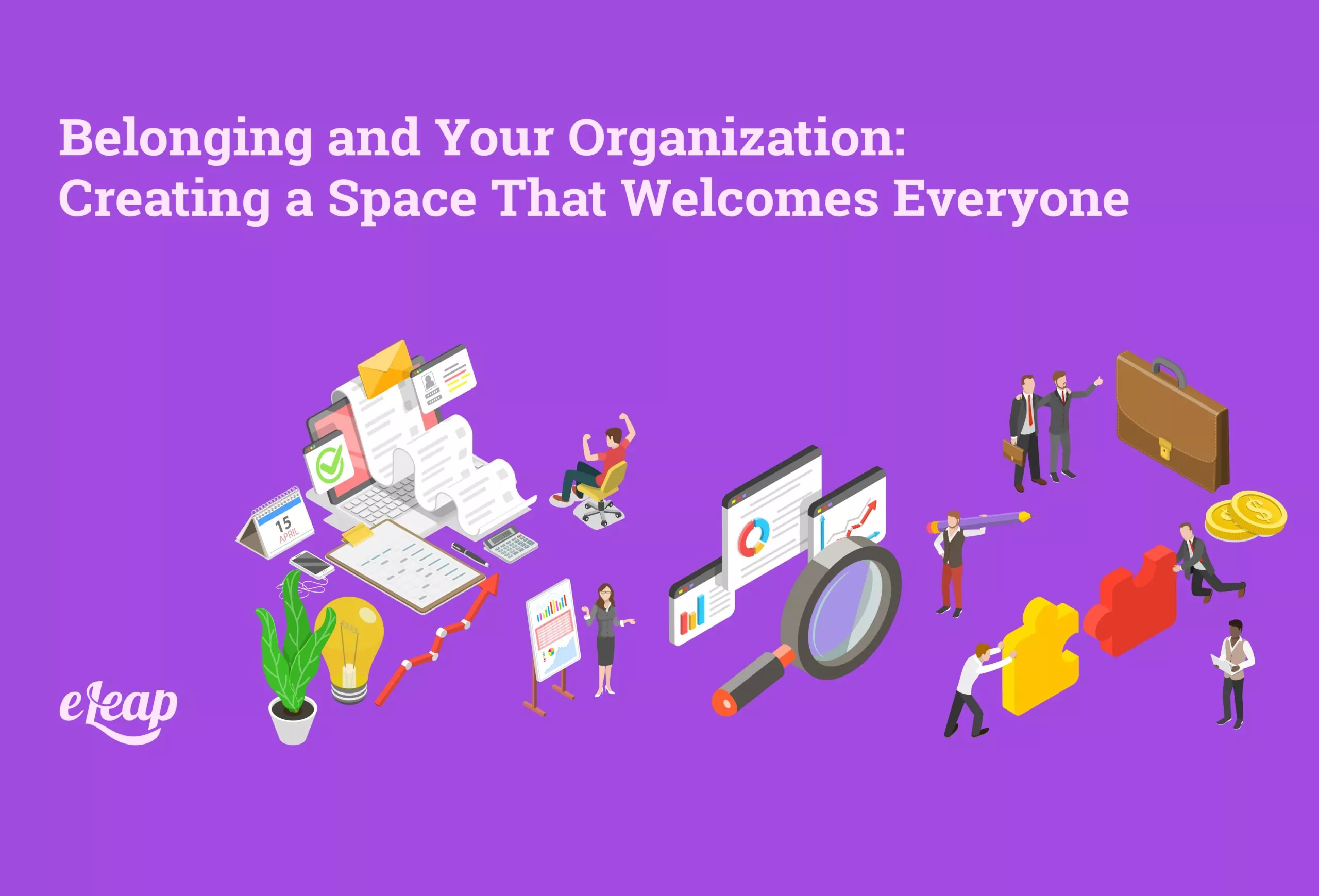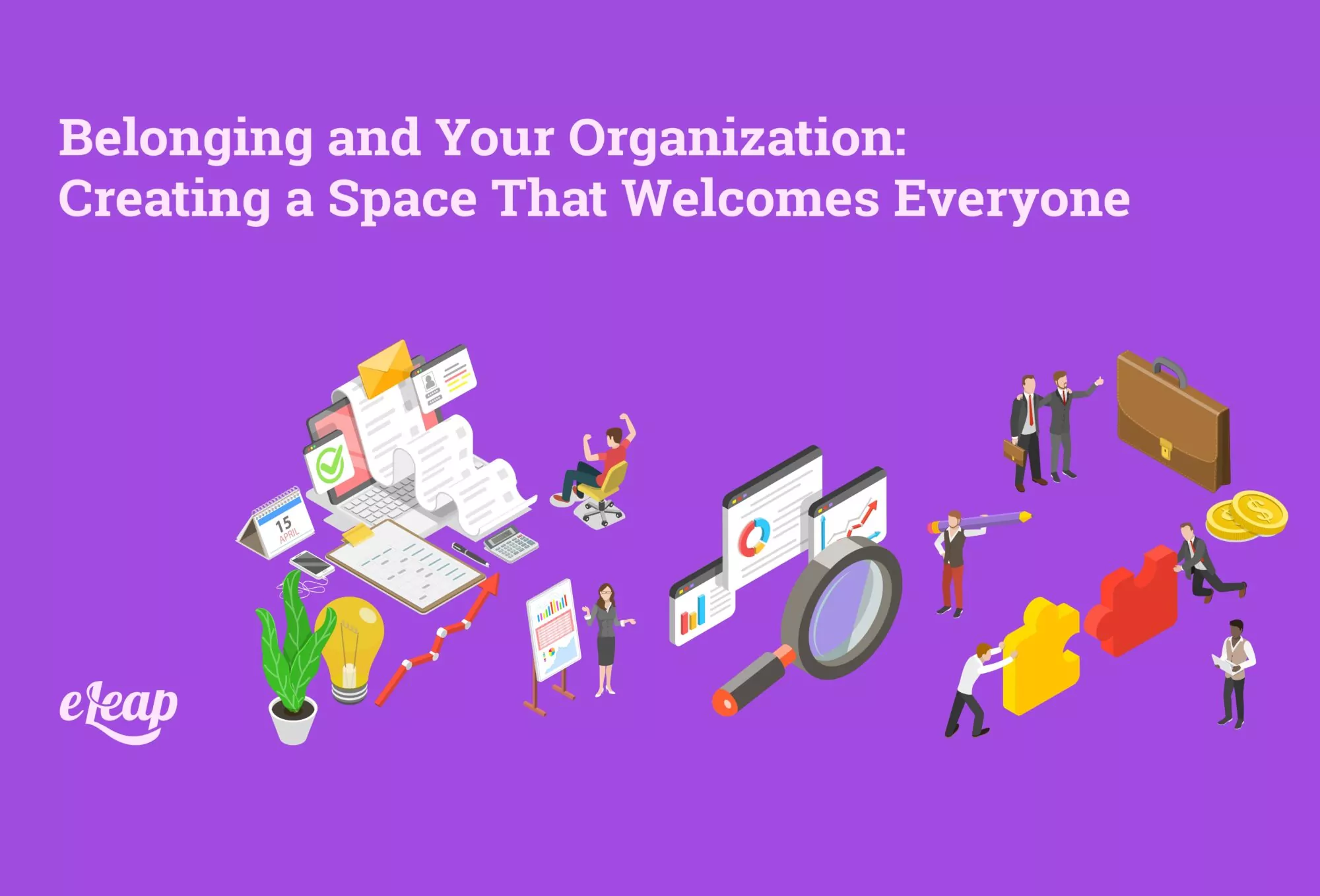Belonging and Your Organization: Creating a Space That Welcomes Everyone

Diversity and inclusion are hot topics today. Organizations large and small, from nonprofits to Fortune 500 firms, realize the need to ensure diversity and to be more inclusive. However, less attention is being paid to another important element – belonging. What is belonging all about and how does it apply to your organization? We’ll explore that in this post.

What Is “Belonging”?
In a sense, belonging can be seen as a proxy for inclusion, diversity, and equity. If those elements are present within your organization, team members are more likely to feel that they belong there. For instance, when a new team member entering the organization sees representation, they feel welcomed and more like they belong.
However, that sense of belonging is not a synonym for the other terms we’re discussing. It should be seen as a goal in and of itself to be established in addition to equity, inclusion, and diversity. After all, a homogenous team environment can also foster a sense of belonging for some people while driving away those who might not fit within the same mold (non-diverse).
So, what is belonging, then? You can think of it this way: Suppose there’s a party being held. Diversity can be seen as receiving an invitation to that party. Inclusion is being asked to dance when you arrive at that party. Belonging is realizing that the person who asked you to dance actually wants to dance with you and that you’re not being asked because of status, talent, or some other extrinsic quality.
The Headcount Problem
Too often, diversity and inclusion are seen as the same thing. After all, if you create a diverse workplace, isn’t that by definition an inclusive workplace? Unfortunately, that’s not always the case.
Diversity is just a numbers thing – it’s all about headcount. How many of this ethnicity can be found within the organization? How many people of this race are present? Numbers are great, but they do not tell the entire story.
You can have an incredibly diverse organization, but if there is no sense of belonging and no inclusion, you’ll still experience high levels of churn and abysmal levels of engagement. Without belonging and inclusion, diversity is pretty meaningless.
So, how do you solve the headcount problem? It will require taking a deep look into what happens when people move through the funnel and join the organization.
Studying the Funnel
When looking at your employment funnel, it is important to take an objective view. Try to look at it as if you were outside the organization. Some of the most important key points to observe include the following:
- What percentage of Black, Hispanic, Asian/Pacific Islander, and LGBTQIA+ are we hiring?
- Does the organization provide inclusion for these individuals within the wider team?
- Is there representation and inclusivity across the entire organizational hierarchy?
- Where do employees move within the organization?
To drill down and determine if you’ve created an organization imbued with a sense of belonging, that last item is perhaps the most important. In an organization where belonging is present, people will migrate throughout. You should find minorities at every level, including the executive level. However, if you do not have minorities as part of your executive suite, chances are good that the organization does not create a sense of belonging (and is likely only taking steps to be inclusive to avoid censure, not because it is the right thing to do).
This speaks of more than value. You can value an employee and what they bring to the organization without actually making them feel that they belong. If you cannot provide a seat at the table for minorities, then belonging does not exist.
Here’s another way to determine whether your employees feel like they belong. Are your Black, Hispanic, Asian, or Pacific Islander executives willing and able to sponsor others of the same gender or ethnicity as themselves? Or do they feel that doing so would be seen as giving special treatment to minorities?
According to a Harvard Business Review article, only 18% of Asians, 21% of African-Americans, and 25% of Hispanics ever step up to sponsorship because of those perceptions. Of course, measuring that and creating meaningful change can be very challenging.
Engagement as a Proxy for Belonging
If your employees feel that they belong, they will also feel a sense of ownership of the organization’s success and their role within it. They will not feel powerless to effect change and disengaged. Rather, they’ll be engaged and active. It follows that engagement is an excellent metric to measure inclusion and belonging.
One answer here is to regularly survey employees. All surveys should be completely anonymous and confidential. That empowers employees to be honest in their answers. A few questions to consider include the following, but make sure they’re paraphrased and customized to your organization):
- Do you feel a sense of safety in your position and within the organization?
- Do you feel that you belong within the organization?
- Do you feel included within your department and the wider organization?
With this information, HR can begin surfacing important insights. Is belonging low in particular areas of the organization? Are specific teams or departments struggling with inclusion? Is it something that managers of those teams/departments doing unintentionally? Where are inequities occurring? What opportunities exist for improvement and what form should those improvements take?
Putting Intention into Action
The first step in creating a sense of belonging is understanding that diversity and inclusion are not the same and that they are not the only metrics by which to measure success. With that realization, HR can step in and begin surveying team members to pinpoint breakdowns and hurdles within the organization that are strangling forward progress. Based on those insights, you can take specific, strategic action, such as providing additional training for managers, reimagining processes, and aligning procedures with best practices in terms of DEIB (diversity, equity, inclusion, and belonging).